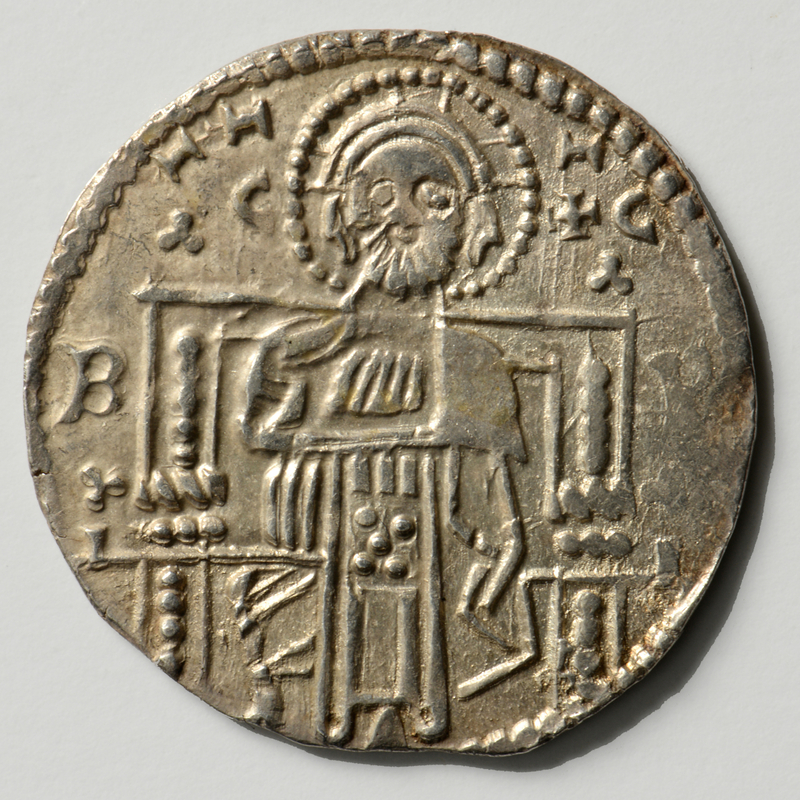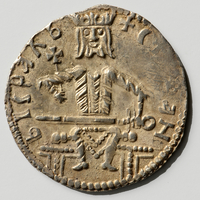Coin of Stefan Dušan (Stefan Uroš IV Dušan)
Type:
Coins
Date:
1331–55
Location or Findspot (Modern-Day Country):
Serbia
Medium:
Silver
Dimensions:
2.1 cm
Description:
Coins produced for Serbian kings and emperors generally imitated Byzantine models, but they are flat rather than cup-shaped. This silver dinar shows, on the obverse, Christ enthroned, identified by his usual Greek abbreviation IC XC (Jesus Christ Savior). The reverse depicts King Stefan Dušan (generally called by scholars Stefan Uroš IV Dušan; r. 1331–55), holding a cross-topped scepter upright and a large sword across his knees. The inscription on this side says "King (Kralj) Stephan." In 1346, after doubling the size of the Serbian kingdom (by conquering Byzantine lands in the Balkans), Stefan Dušan proclaimed himself emperor and established an Orthodox patriarchate independent of Constantinople.
The royal crown seen here echoes that of earlier Serbian kings; Stefan Uroš IV's imperial coins show him wearing the loros and the closed, hemispherical crown of late Byzantine rulers. Stefan Uroš IV had spent seven years in Constantinople with his exiled father, so he had firsthand knowledge of Byzantine regalia. The meaning of the B next to Christ's throne is unclear; it may indicate the engraver, the mint, or something else.
The royal crown seen here echoes that of earlier Serbian kings; Stefan Uroš IV's imperial coins show him wearing the loros and the closed, hemispherical crown of late Byzantine rulers. Stefan Uroš IV had spent seven years in Constantinople with his exiled father, so he had firsthand knowledge of Byzantine regalia. The meaning of the B next to Christ's throne is unclear; it may indicate the engraver, the mint, or something else.
Relevant Textbook Chapter(s):
9
Repository and Online Resources:
• See this coin (BZC.2009.021) on the Dumbarton Oaks website.
• Read about the history of Serbian coinage on the Blago Fund website.
Image Credits:
Dumbarton Oaks, used by permission


